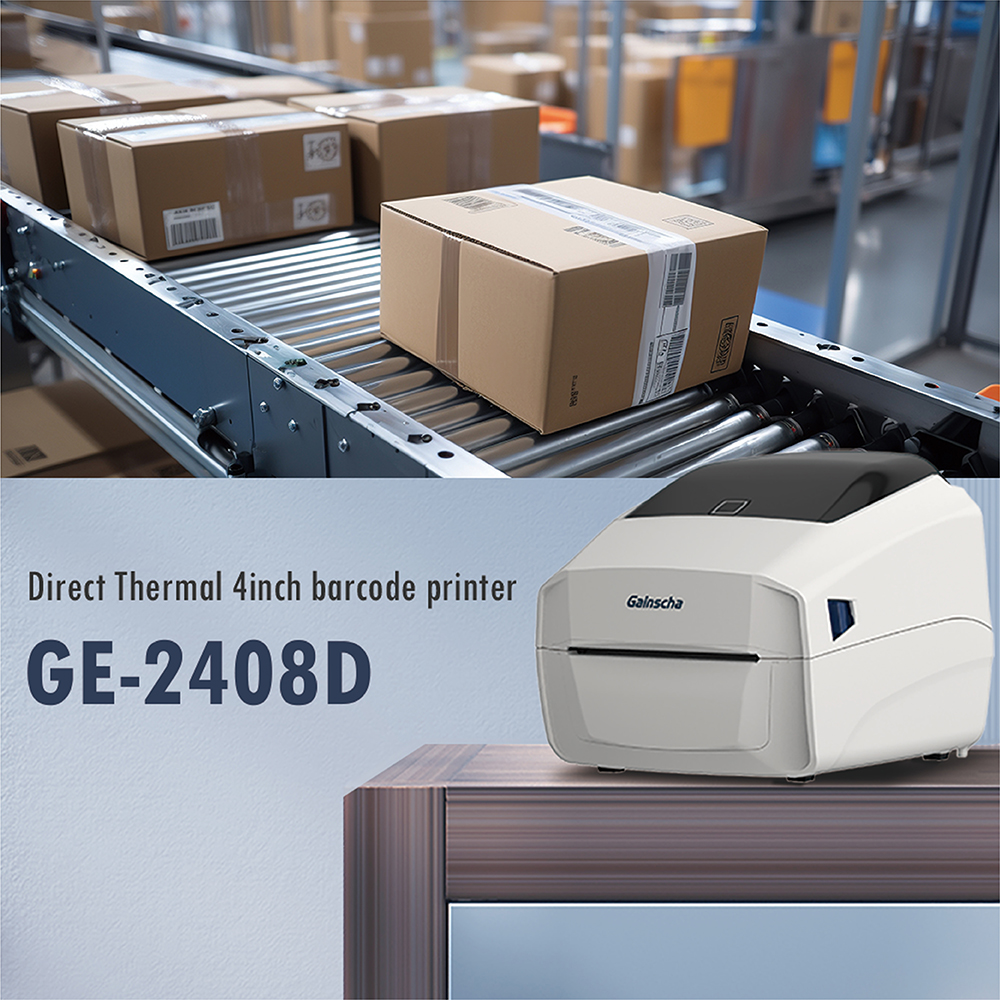When it comes to intelligent barcode printers, choosing the right printing technology is crucial for efficiency and accuracy. Two prominent contenders in the realm of barcode printing are thermal transfer and direct thermal technologies. In this article, we'll unravel the characteristics of each, helping you make an informed decision for your printing needs.

Understanding Thermal Transfer Technology
Versatility in Printing Materials:
One of the key advantages of thermal transfer technology lies in its compatibility with a wide range of printing materials. Whether it's paper, film, or synthetic labels, thermal transfer printers can handle them all. This versatility makes them ideal for applications where durability and longevity of printed labels are paramount.
How it Works:
In thermal transfer printing, a ribbon is used to transfer ink onto the label. The ribbon, typically made of wax, resin, or a combination, is heated by the printhead, transferring the ink onto the label material. This process results in high-quality, long-lasting prints suitable for various industries, including manufacturing and logistics.
Delving into Direct Thermal Technology
Simplicity in Design:
Direct thermal printing simplifies the printing process by eliminating the need for ribbons or ink cartridges. Instead, it relies on special thermal paper that turns dark when exposed to heat. This simplicity in design makes direct thermal printers more cost-effective and straightforward to maintain.
Ideal for Short-Term Labeling:
Direct thermal printing is excellent for applications where labels have a shorter lifespan. It's commonly used in situations where labels are not exposed to extreme environmental conditions, making it a popular choice for shipping labels, receipts, and tickets.

Comparing the Two: A Closer Look
Cost Considerations:
Thermal Transfer: While the initial cost of thermal transfer printers and consumables may be higher, the long-term cost efficiency is notable due to the versatility of printing materials and reduced wastage.
Direct Thermal: Direct thermal printers tend to have lower upfront costs, making them an attractive option for businesses with budget constraints. However, ongoing expenses may be higher due to the specialized thermal paper.
Print Durability:
Thermal Transfer: Known for producing durable and long-lasting prints, thermal transfer technology is ideal for applications requiring labels to withstand harsh conditions and resist fading.
Direct Thermal: Labels produced through direct thermal printing are sensitive to environmental factors like heat and light. They are suitable for short-term uses where durability is not a primary concern.
Choosing the Right Fit for Your Needs
Your choice between thermal transfer and direct thermal technology ultimately depends on your specific requirements. Consider factors such as the intended use of the labels, environmental conditions, and budget constraints when making your decision.
Final Thoughts: Making Informed Choices for Efficiency
Intelligent barcode printers play a crucial role in streamlining operations, enhancing accuracy, and improving overall efficiency. Whether you opt for thermal transfer or direct thermal technology, understanding the strengths and limitations of each empowers you to make choices that align with your business goals.
For more information on intelligent barcode printers or to connect with a reliable supplier, feel free to contact us. Our team is dedicated to providing solutions tailored to your printing needs, ensuring seamless operations and optimal performance. Make the right choice for your business and watch efficiency soar.









